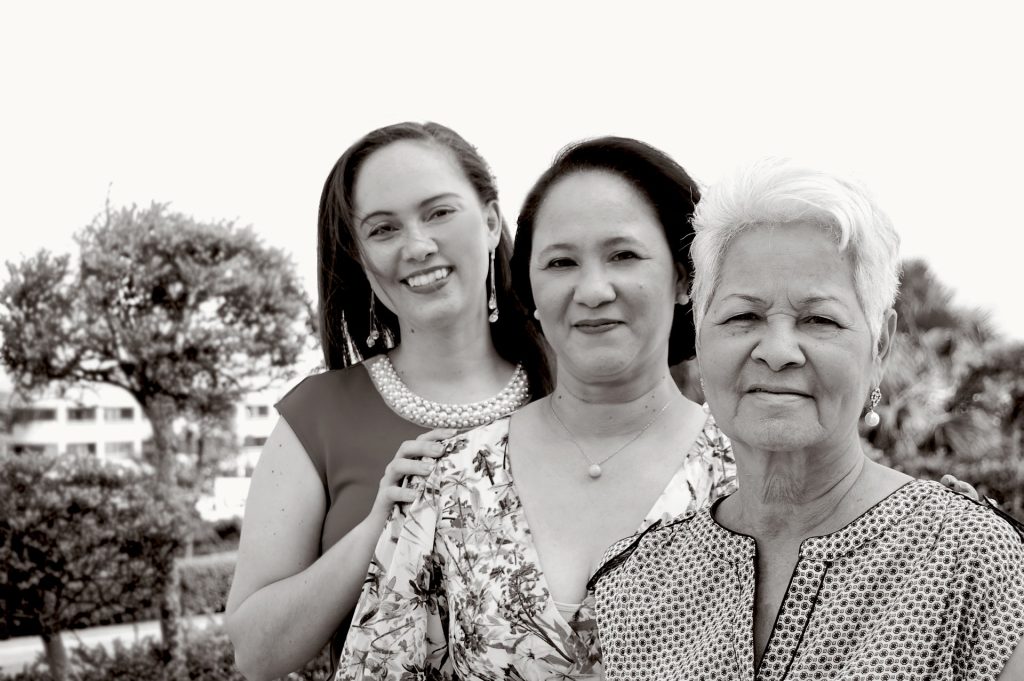Section 1: Introduction to Lifespan Development
1.1: Introduction to Lifespan Development

Welcome to the study of lifespan development! This is the scientific study of how and why people change or remain the same over time.
Think about how you were five, ten, or even fifteen years ago. In what ways have you changed? In what ways have you remained the same? You have probably changed physically; perhaps you’ve grown taller and become heavier. But you may have also experienced changes in how you think and solve problems. Cognitive change is noticeable when we compare how 6-year-olds, 16-year-olds, and 46-year-olds think and reason, for example. Their thoughts about themselves, others, and the world are probably quite different. Consider friendship—a 6-year-old may think that a friend is someone with whom they can play and have fun. A 16-year-old may seek friends who can help them gain status or popularity. The 46-year-old may have acquaintances but relies more on family members to do things with and confide in. You may have also experienced psychosocial change. This refers to emotions and psychological issues as well as social roles and relationships. Psychologist Erik Erikson suggests that we struggle with issues of trust, independence, and intimacy at various points in our lives (we will explore this thoroughly throughout the course.)
This is a very interesting and meaningful course because it is about each of us and those with whom we live and work. One of the best ways to gain perspective on our own lives is to compare our experiences with those of others. In this course, we will strive to learn about each phase of human development and the physical, cognitive, and psychosocial changes, all the while making cross-cultural and historical comparisons and connections to the world around us.
In addition, we will take a lifespan developmental approach to learn about human development from the moment of conception until death. That means that we won’t just learn about one particular age period by itself; we will learn about each age period, recognizing how it is related to both previous developments and later developments. For instance, it helps us to understand what’s happening with the 16-year-old by knowing about development in the infant, toddler, early childhood, and middle childhood years. In turn, learning about all of that development during adolescence and early adulthood will help us to more fully understand the person at age 46 (and so on throughout midlife and later adulthood).
Development does not stop at a certain age; development is a lifelong process. We may find individual and group differences in patterns of development, so examining the influences of gender, cohort/generation, race, ethnicity, culture, socioeconomic status, education level, and time in history is also important. With the lifespan developmental perspective, we will gain a more comprehensive view of the individual within the context of their own developmental journey and within social, cultural, and historical contexts. In this way, this course covers and crosses multiple disciplines, such as psychology, biology, sociology, anthropology, education, nutrition, economics, and healthcare.
- What aspects of ourselves change and develop as we journey through life?
- We experience significant physical, cognitive, and psychosocial changes throughout our lives. Do these changes happen systematically and to everyone?
- How much is due to genetics, and how much is due to environmental influences and experiences (both within our personal control and beyond)?
- Is there just one course of development, or are there many different courses of development?
In this section, we’ll examine these questions and learn about the major stages of development and what kind of developmental tasks and transitions we might expect along the way.
Who Studies Human Development and Why?
Many academic disciplines contribute to the study of development, and this type is offered in some schools as psychology (particularly developmental psychology); in other schools, it is taught under sociology, human development, or family studies. This multidisciplinary course is made up of contributions from researchers in the areas of health care, anthropology, nutrition, child development, biology, gerontology, psychology, and sociology, among others. Consequently, the stories provided are rich and well-rounded, and the theories and findings can be part of a collaborative effort to understand human lives.
The main goals of those involved in studying human development are to describe and explain changes. Throughout this course, we will describe observations during development and examine how theories explain why these changes occur. For example, you may observe two-year-old children being particularly temperamental, and researchers offer theories to explain why that is. We’ll learn a lot more about theories, especially developmental theories, in the next chapters.
Attributions
Human Growth and Development by Ryan Newton is licensed under a Creative Commons Attribution-NonCommercial 4.0 International License,
